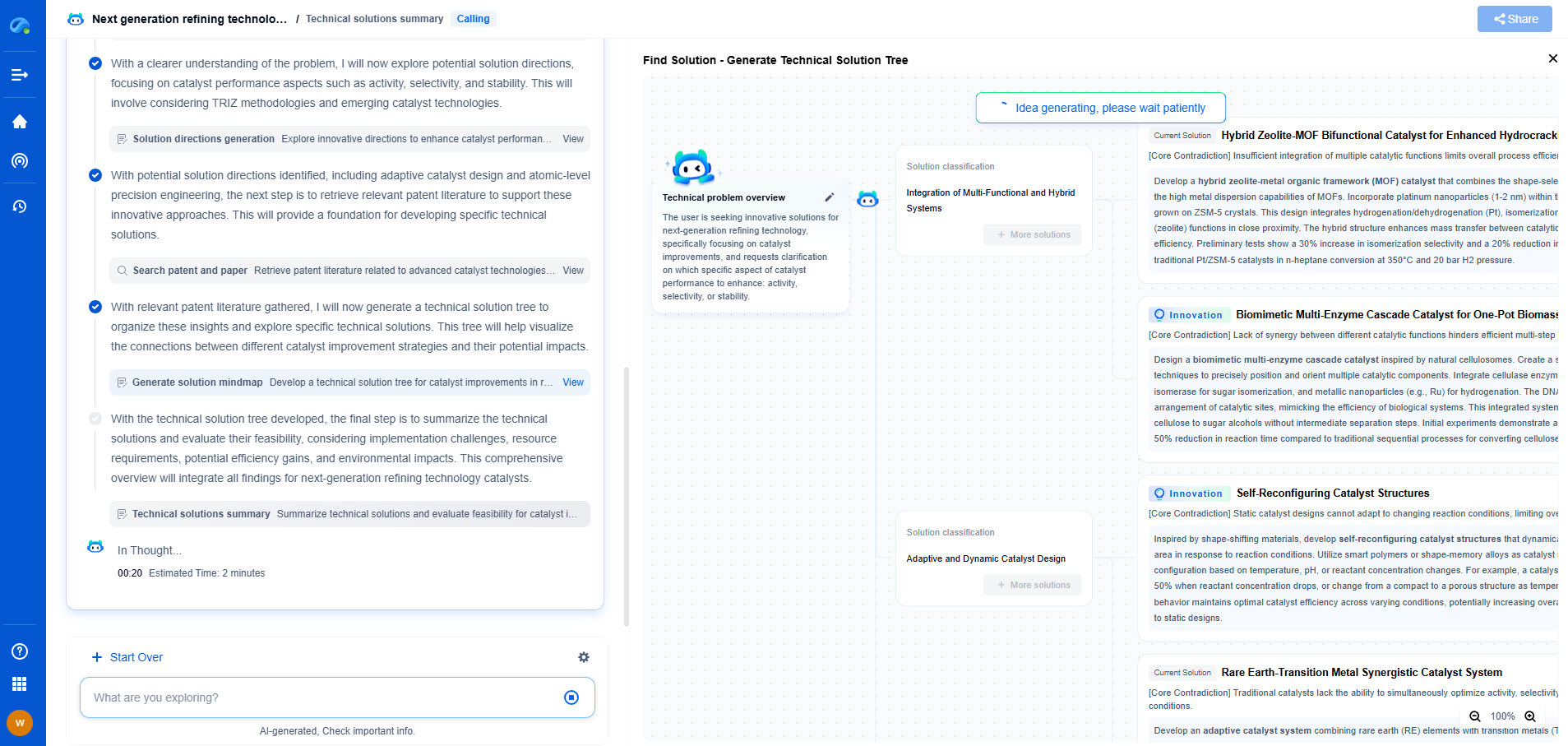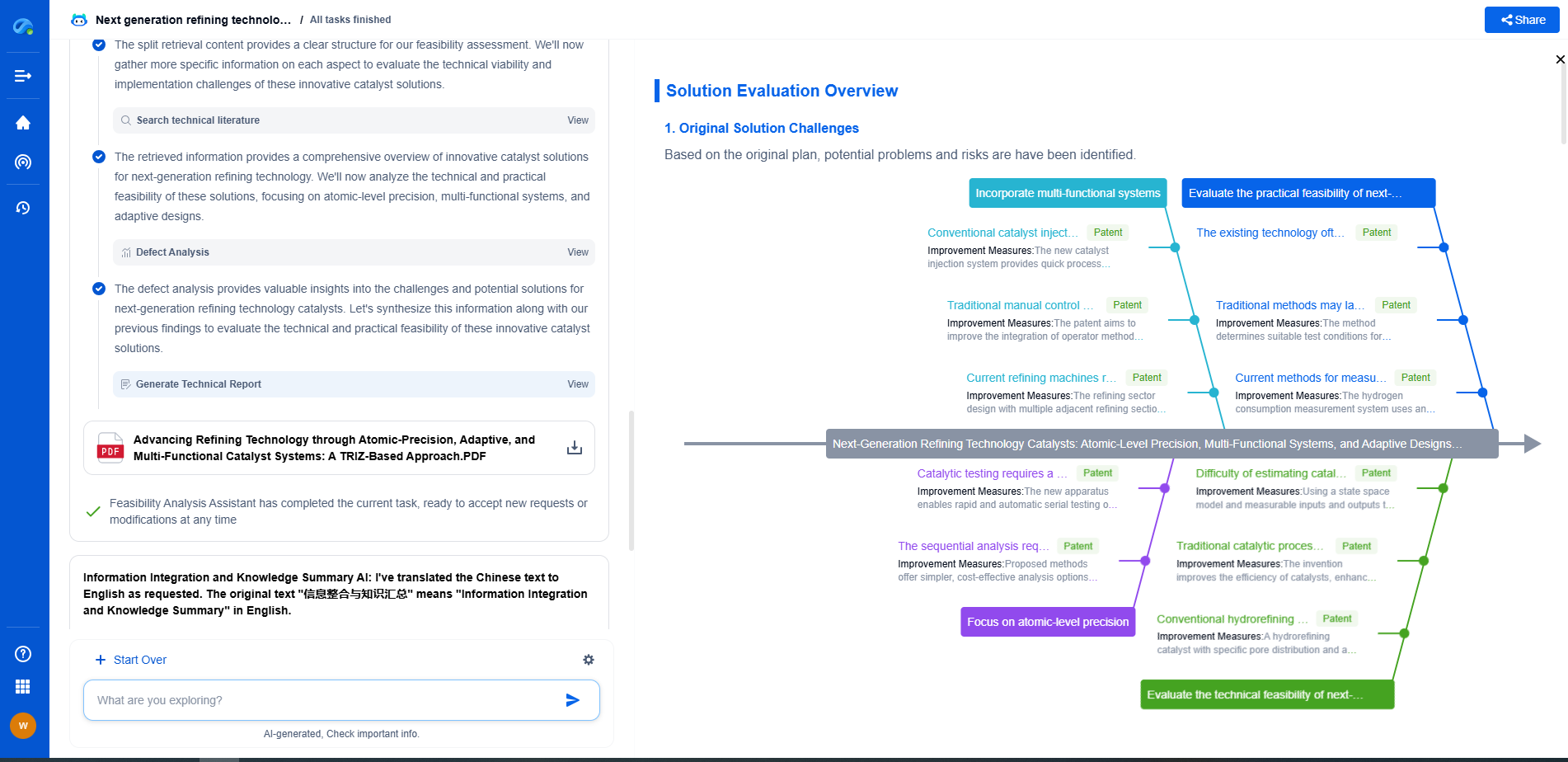AI-Assisted Calibration: Self-Learning Compensation for Sensor Drift
JUL 14, 2025 |
Sensor drift is a common challenge in various industries, where precision and accuracy are paramount. Over time, sensors can deviate from their calibrated settings due to factors like environmental changes, aging, or manufacturing inconsistencies. This drift can lead to inaccurate data, which may compromise the quality of decision-making processes. Traditional calibration methods require manual adjustments and periodic maintenance, which can be both costly and time-consuming.
The Promise of AI-Assisted Calibration
Artificial Intelligence (AI) is revolutionizing the way we approach sensor calibration. By leveraging machine learning algorithms, AI can assist in dynamically adjusting sensors, compensating for drift, and maintaining accuracy without frequent human intervention. This self-learning approach not only saves time and resources but also improves the reliability and efficiency of the devices in which these sensors are embedded.
How AI-Assisted Calibration Works
AI-assisted calibration employs advanced machine learning models that analyze sensor data in real-time. These models learn from patterns and anomalies, predicting when and how a sensor might drift. By continuously monitoring the sensor's performance, the AI system can autonomously adjust the calibration settings. This process involves several steps:
1. Data Acquisition: Continuous data collection from the sensor is essential. The more data the AI system processes, the more accurately it can predict drift and adjust settings.
2. Model Training: Using historical data, the AI system is trained to recognize patterns indicative of sensor drift. Machine learning techniques, such as regression analysis and neural networks, are often employed.
3. Real-time Analysis: Once trained, the system analyzes incoming sensor data in real-time, comparing it against the established model to detect deviations.
4. Autonomous Adjustment: When drift is detected, the AI system automatically initiates compensation procedures, recalibrating the sensor to its optimal state.
Advantages of AI-Assisted Calibration
1. Enhanced Precision: By continuously adjusting for sensor drift, AI systems maintain high levels of precision and accuracy, essential for industries like healthcare, aerospace, and manufacturing.
2. Cost-Effectiveness: Reducing the need for manual recalibration lowers maintenance costs and minimizes downtime.
3. Prolonged Sensor Life: Continuous monitoring and adjustment can prevent excessive wear and tear on sensors, extending their operational lifespan.
4. Scalability: AI-assisted systems can manage a network of sensors, making it ideal for large-scale industrial applications where manual calibration would be impractical.
Challenges and Considerations
Despite its advantages, AI-assisted calibration is not without challenges. Developing accurate models requires access to extensive historical data, which may not always be available. Furthermore, ensuring the security and privacy of sensor data is crucial, especially in sensitive industries like healthcare.
Additionally, the initial setup and integration of AI systems can be complex and costly. Companies must weigh these factors against the long-term benefits of enhanced sensor performance.
Future Directions
As AI technology continues to evolve, so too will its applications in sensor calibration. Future developments may include more sophisticated algorithms capable of handling even more complex sensor networks. Integration with the Internet of Things (IoT) could further enhance real-time data acquisition and processing capabilities.
Moreover, advancements in explainable AI could provide more transparent insights into how calibration adjustments are made, fostering greater trust and adoption across various sectors.
Conclusion
AI-assisted calibration represents a significant leap forward in maintaining sensor accuracy and reliability. By adopting self-learning compensation techniques, industries can enhance their operational efficiency, reduce costs, and improve product quality. As technology advances, the potential for AI in mitigating sensor drift will only continue to expand, opening new possibilities for innovation and growth.
From 5G NR to SDN and quantum-safe encryption, the digital communication landscape is evolving faster than ever. For R&D teams and IP professionals, tracking protocol shifts, understanding standards like 3GPP and IEEE 802, and monitoring the global patent race are now mission-critical.
Patsnap Eureka, our intelligent AI assistant built for R&D professionals in high-tech sectors, empowers you with real-time expert-level analysis, technology roadmap exploration, and strategic mapping of core patents—all within a seamless, user-friendly interface.
📡 Experience Patsnap Eureka today and unlock next-gen insights into digital communication infrastructure, before your competitors do.
- R&D
- Intellectual Property
- Life Sciences
- Materials
- Tech Scout
- Unparalleled Data Quality
- Higher Quality Content
- 60% Fewer Hallucinations
Browse by: Latest US Patents, China's latest patents, Technical Efficacy Thesaurus, Application Domain, Technology Topic, Popular Technical Reports.
© 2025 PatSnap. All rights reserved.Legal|Privacy policy|Modern Slavery Act Transparency Statement|Sitemap|About US| Contact US: help@patsnap.com

